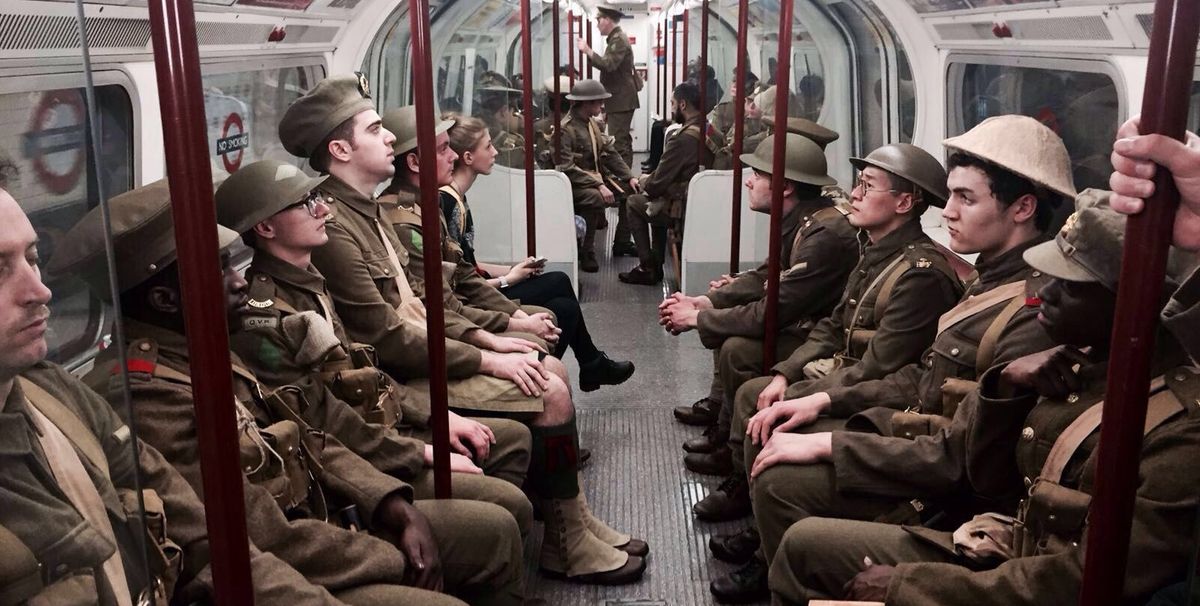As 2016 drew to a close, we asked Maria Balshaw, the director of Manchester Art Galleries and the Whitworth at the University of Manchester, to pick her highlights of the year. Last week, the news leaked that she will succeed Nicholas Serota as the next director of the Tate, which its trustees confirmed today, 17 January.
Balshaw is due to take up the post in June, the first woman to fill the post. Last June, she told us why Jeremy Deller's "ghost soldiers" and Anya Gallaccio's "ghost tree" were particularly memorable.
"I cannot say anything other than I am worried about the world and that what museums and galleries offer is more vital than ever. We have witnessed divisive politics at home and abroad; countering this and creating space for exploration of difference and intercultural understanding gets to the heart of the civic role of museums of all stripes. My highs therefore are chosen with this in mind. And I reflect that they are often about joy and lightheartedness, but also about the acceptance of loss.
Jeremy Deller’s We’re Here Because We’re Here was a masterstroke of commemoration that embraced the widest possible constituency of people. My first sighting was a group of uniformed young men walking across Whitworth Park; a moment later I saw a tweet from a Whitworth staffer. By the end of the day the nation was engaged and moved—truly remarkable.
My second highlight is also an act of commemoration for the dead amongst us. Christian Boltanski’s Animitas is the most recent sculptural addition to Jupiter Artland’s wonderful sculpture park outside Edinburgh. On a balmy summer evening I walked towards a large pond to hear first, before seeing, his installation of 200 small Japanese bells attached to long stems planted in the ground on an island in the middle of the water. The bells amplify the fluttering of the wind, with a reed-like chiming that continues day and night. Boltanski calls it 'the music of the soul'. Animitas are altars that indigenous people put beside the road in Chile to honour the dead and Boltanski asks us to think of the ancestors always around us.
As this list risks morbidity or at least melancholia, I also want to share a joyous highlight from Jupiter, seen on the same visit. Céleste Boursier-Mougenot presented From Here to Ear v.20 inside their Steadings gallery. Featuring electric guitars and basses 'played' by the alighting of a charm of zebra finches on to the amped up strings, it was a punk bird orchestra of extraordinary colour and delight.
Sound was also the abiding feature of one of my shows of the year, The Infinite Mix: Contemporary Sound and Image. Curated by Ralph Rugoff and the Hayward team off-site at The Store on the Strand in London, it is a brilliant selection of contemporary audiovisual artworks—where the interplay of image and sound creates space to explore pleasure and politics simultaneously. Works by artists such as Ugo Rondinone, Jeremy Deller and Cecilia Bengolea, Elizabeth Price and Cyprien Gaillard lay claim to spaces dispersed across The Store, and perhaps the most exciting element was to see the diversity of audiences giving hours of their time to the works.
Sound was also a critical feature of the wonderful show curated by Elizabeth Price, In a Dream You Saw a Way to Survive and You Were Full of Joy, with the Hayward Touring team, that I am bound to mention as a highlight, even though it took place on home turf at the Whitworth. My other pleasure and surprise recently was the Edward Krasinski show at Tate Liverpool. Having only previously seen a small number of this great Polish artist’s works, the brilliant and comprehensive exhibition of his sculptural works, paintings and room installations was a joyful illumination.
Finally, and returning to my theme of the role of art and artists in the world, 2016 saw the first permanent public sculpture by Anya Gallaccio, Untitled (2016), unveiled in Whitworth Park. A stainless steel 'ghost tree' derived from the single (dying) plane tree that had to be removed during the Whitworth’s refurbishment, it reflects its park surroundings and invites an encounter with art long before the communities that use the park even step into the gallery. As an object for reflection and contemplation, it helped me retain my optimism on the morning of 24 June [the day after the Brexit vote]."


